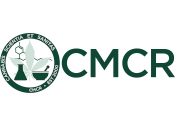INVESTIGATOR: Nicholas Bernthal, M.D.
STUDY LOCATION: UCLA
PROJECT TITLE: Evaluating the Impact of perioperative cannabidiol exposure in a preclinical model of orthopaedic implant infections
FUNDING SOURCE: Center for Medicinal Cannabis Research
PROJECT TYPE: Pre-Clinical Study
STATUS: Active
ABSTRACT:
Background-Significance-Hypotheses: Optimal perioperative pain management during joint replacement surgeries portends good outcomes, but is made challenging by the risks associated with common analgesic options such as NSAID and opioids. Cannabidiol (CBD) is widely touted to improve orthopaedic pain; its potential for anti-nociception is well-advertised, but far less is known about its impact on the host immune response and on pathogenic bacteria. As periprosthetic joint infections (PJI) are the most prevalent and devastating cause of failure in joint arthroplasty, an investigation into these relationships is critical if we are to consider CBD as a perioperative analgesic. We hypothesize that low to moderate doses of CBD exposure in the perioperative period will have no effect of bacterial burden. Innovation: Currently, no preclinical or clinical studies evaluate whether CBD use perioperatively impacts outcomes after arthroplasty. Our study is the first to take a broader survey of safe CBD use in orthopaedics such that further exploration into its analgesic utility can be pursued in appropriately-powered clinical trials. Design-Methods: We will test our hypothesis using our well-established murine model of PJI. Animals will receive low, medium, or high-dose CBD by oral gavage 5 days/week for 8 weeks preoperatively. Mice will undergo surgery involving the retrograde placement of an orthopaedic-grade implant into the right distal femur. The joint is then inoculated with bioluminescent S. aureus Xen36. Bacterial bioluminescence will be monitored longitudinally through the 28-day post-operative period. Animals will then be euthanized for enumeration of implant and periprosthetic soft tissue bacteria colony forming units (CFUs), scanning electronic microscopy, and implant biomechanical stress testing ex vivo. Statistical Plan: Kruskal-Wallis methods, followed by post-hoc Dunn’s test will be applied to analyze differences in bioluminescence and CFUs across groups. One-way ANOVA will be used to compare biomechanical stress tolerance across groups. Implications: Early studies demonstrate that nearly one-fourth of arthroplasty patients are utilizing CBD in the perioperative period. Nonetheless, no guidance is provided for its use, benefits nor risks by the American Academy of Orthopaedic Surgery. If CBD administration is found to be safe around arthroplasty, CBD may be safely explored as an analgesic for 4 million patients annually.

